The smallest and most affordable M car is now larger, more powerful, and packed with more technology than ever before. The classic M formula still stands strong with the new M2 (G87): inline-six, manual gearbox, and rear-wheel drive. And with rivals like the Mercedes-AMG C 63 already implementing heavy batteries and downsized four-cylinder engines, the lightweight ethos behind the M2 is becoming increasingly extinct with every passing year. Not to mention, this might be the last M car to host a three-pedal layout, so we’re equal parts sad and excited to hop behind the wheel.

We haven’t quite warmed up to the looks, a mechanical set of polygons and pixels that seem to have been generated and assembled by artificial intelligence rather than a design studio filled with sentient beings. BMW’s prescribed gym routine must be working with the muscles this new M2 is packing, but when parked next to the last-generation M2 or even the 1M, it appears bloated and swollen, and not a car you’d get out of and glance at. At least it’s been spared the beaver teeth grills from the M3.

The rear doesn’t fare much better with Fruit Gusher taillights and the same thin lip spoiler as the M240i. The signature quad exhausts are easily distinguishable, but a look at the M Performance Parts catalogue offers a remedy with optional features such as a picnic table spoiler, stacked center-exit titanium exhausts, and center-locking bronze wheels.
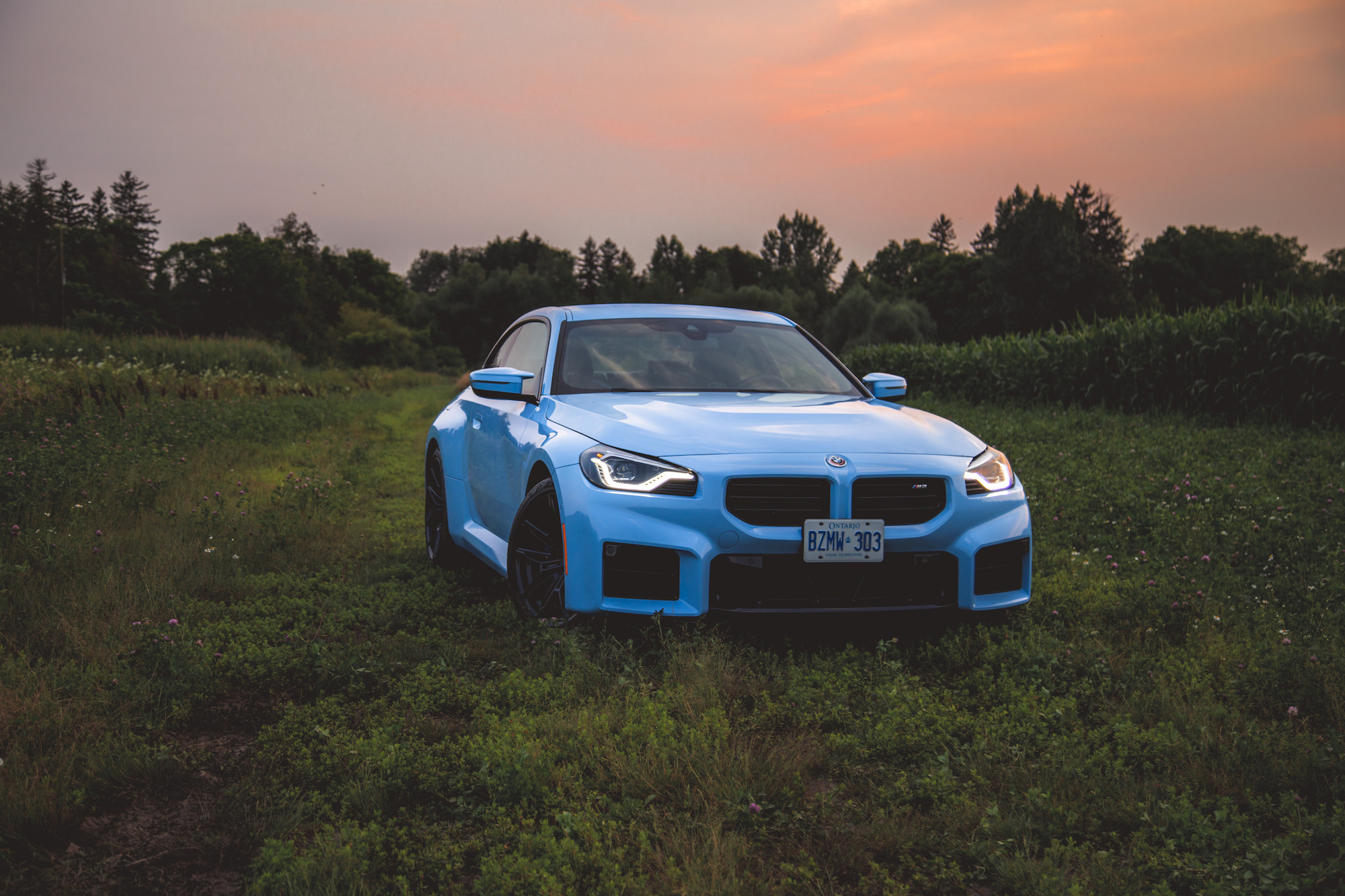
Only five paint colours are offered but we’re certain that a future Competition or CS model will add a few more. Zandvoort Blue (BMW commonly names their colours after racetracks) is a light baby blue that isn’t as saturated as Tiffany Blue, and not as vibrant with purple hues as Hyundai N’s Performance Blue, but it’s distinctive and matches the M2’s aesthetic.

The interior design doesn’t stray far from the M3 and M4. A large, beefy steering wheel sits in front of the driver, featuring a leather-wrapped airbag cover and red M buttons to program your favourite driving settings. The black gloss panels are standard but they look somewhat out of place when surrounded by more premium materials. We highly recommend the optional carbon fibre inserts ($1,500) instead.

A 12.3-inch curved screen flanks the wheel, while a 14.9-inch touchscreen is positioned on the dashboard, loaded with BMW’s latest infotainment unit, which we find easy to use and learn. The standard sport seats are great, offering a wide range of adjustability with excellent lumbar and side support, and are adorned with an illuminated M2 badge below the headrest. While the optional carbon bucket seats look more aggressive, they aren’t very comfortable for your thighs as you operate the three pedals. For a manual M2, best to stick with the sports seats. They’re heated too.

Calling it a short-wheelbase M4 sounds like a cheap dig at engineering laziness but the M2 is anything but. The spec sheet might seem like a copy-and-paste job, though, as it takes the same S58 engine from the M4 with 457 hp and 406 lb-ft of torque on tap, 9 hp more than the M2 CS that precedes it. Both an 8-speed automatic and a 6-speed manual are available at no additional cost, but the vehicle is strictly rear-wheel drive. A limited-slip differential, adaptive dampers, variable-ratio steering, sticky Pirelli P Zero rubber, and an optional carbon fibre roof round out its armoury.
But here’s the kicker. The M2 weighs 40 kg less and has 20 hp less than the equivalent manual M4 RWD. Hence, it will sprint from 0-100 km/h in 4.3 seconds, two-tenths slower than the automatic (4.1 s) and only one-tenth slower than the M4 (4.2 s). This was the same issue that Porsche had, trying to limit the 718 GT4 RS to not cannibalize sales with the 911.

It’s surprising to discover that BMW’s manual gearbox shifter hasn’t changed at all over the years. The rubbery feel of the shifter travel, the notchy gates, and the need for a deliberate shove to engage the gear are a nostalgic throwback to operating an M car, dating back to the E39 M5. Those who have piloted a manual M car before won’t have to reprogram any muscle memory, but it’s a shame not to see any improvement, especially when newer, more direct, and shorter travel shifters are superior. As such, we prefer the Honda Civic Type R and Toyota GR86 knobs for their superior tactility, clarity, and forgiving nature. They’re more fluid in action, and it’s easier to find a natural rhythm when rowing through.

By comparison, the M2 needs to be wrestled into gear, and it’s easy to accidentally find 1st instead of 3rd gear if not paying attention. It’s still our preferred gearbox, as the engagement it offers is tenfold, but the gap to the automatic is no longer as significant. On a public back road, you won’t find many chances to shift out of third gear. The ratios aren’t as tall as a 718 Cayman GTS or GT4, and not as short as a rapid-fire CLA 45 AMG dual-clutch, but you need a racetrack and a lengthy straight to truly stretch the M2’s legs.
The clutch pedal is a familiar game too, with a fair bit of travel and requiring a strong leg to actuate. The deepest 20% of the pedal requires more strength than the latter 80%, but the bite point isn’t difficult to find and is broad enough to avoid stalling. The M2 also comes with uphill start assist and auto-blip downshifts, catering towards green drivers or those who need a bit of a break in stop-and-go traffic.

After getting out of a Mercedes-AMG CLA 45 or Audi RS 3, the M2 feels chunky, opening a gap in the market for a small, lightweight sports car. Alpine, are you hearing this? Be that as it may, the M2 is better balanced than an M4, with more of its weight focused in the center. There’s slightly less weight to manage, and its tenacious front end enjoys changing direction as much as it does lighting up its rears. It has a lovely, almost mid-engine balance, and there’s more grip than you think, thanks to larger tires—uncoincidentally, the same size and width as the M4.
As such, the front’s rate of response is keen but more intuitive, so you need less time to acclimatize before you can really enjoy steering the car through corners. But we were happily surprised by its stellar ride quality and like the M240i, the M2 stays wonderfully composed and supple even on broken roads. Shut off the exhaust, dial it back to the softest engine settings, and from the driver’s seat, it’s no louder, nor is the ride any more taxing than that of the M240i.

The M2 also allows you to tune its drive settings to your heart’s content. You can adjust the engine mapping, suspension harshness, steering and braking strengths, auto-blipping on manual downshifts, and ten traction control modes with varying levels of assistance, much like the yellow dial in the Mercedes-AMG GT R. These can be programmed into the M1 and M2 buttons on the steering wheel as well for quick access.
There’s a dedicated exhaust button as well, but it doesn’t illuminate to indicate that it’s activated. Annoyingly, only a small message appears on the dash, but the open exhaust offers just enough noise to sound exciting without being excessive. It hisses and whooshes as the turbos build up boost, and a flurry of pops and bangs follow throttle overrun. The acoustics aren’t as charming as a five-cylinder TT RS, or as belligerent as a highly-strung AMG four-cylinder, but it sings a silky siren song that’s like nothing else.
No matter what settings you choose, the M2 doesn’t feel compromised when summoned for errand duties. It has a sizable trunk and somewhat usable rear seats for children, but is sadly let down by an abysmally small fuel tank, where moderate speed driving yielded only 300 km on a full tank, and our 15.7 L/100 km average didn’t help either.

It is not the lightweight sports car we once knew and may disappoint those expecting it to be. Instead, it’s an incredibly capable sports car that combines a nuclear engine with a playful chassis and stellar ride composure. The manual gearbox is both a throwback and a joy to operate, and adds an extra layer of involvement and driver reward to the experience, one that we will savour while it’s still offered. In retrospect, we have realized that this is not the M2 we wanted, but it’s the M car that we’ve always needed.
Specifications:
Model: 2023 BMW M2 (G87)
Paint Type: Zandvoort Blue
Base Price: $76,500
Price as Tested: $79,600
Curb weight (kg): 1,699
Engine: 3.0-litre twin-turbocharged inline-six
Horsepower: 453 hp @ 6,250 rpm
Torque: 406 lb-ft @ 2,650 rpm
Transmission: 6-speed manual
Engine & Drive Configuration: Front engine, RWD
Observed Fuel Consumption (L/100km): 15.7
Tires: Pirelli P Zero


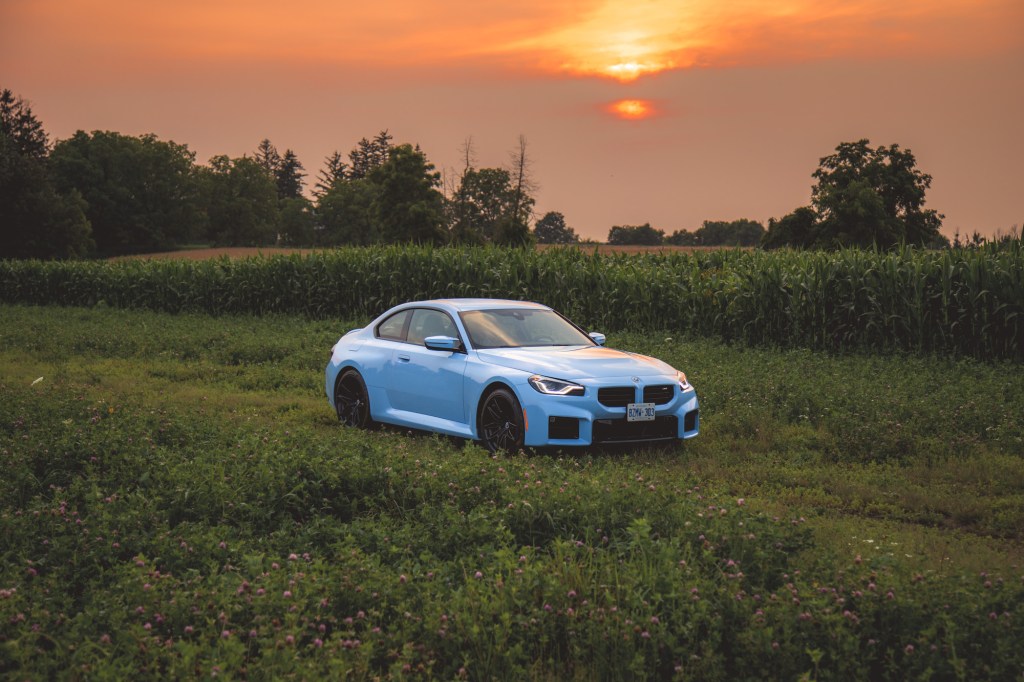


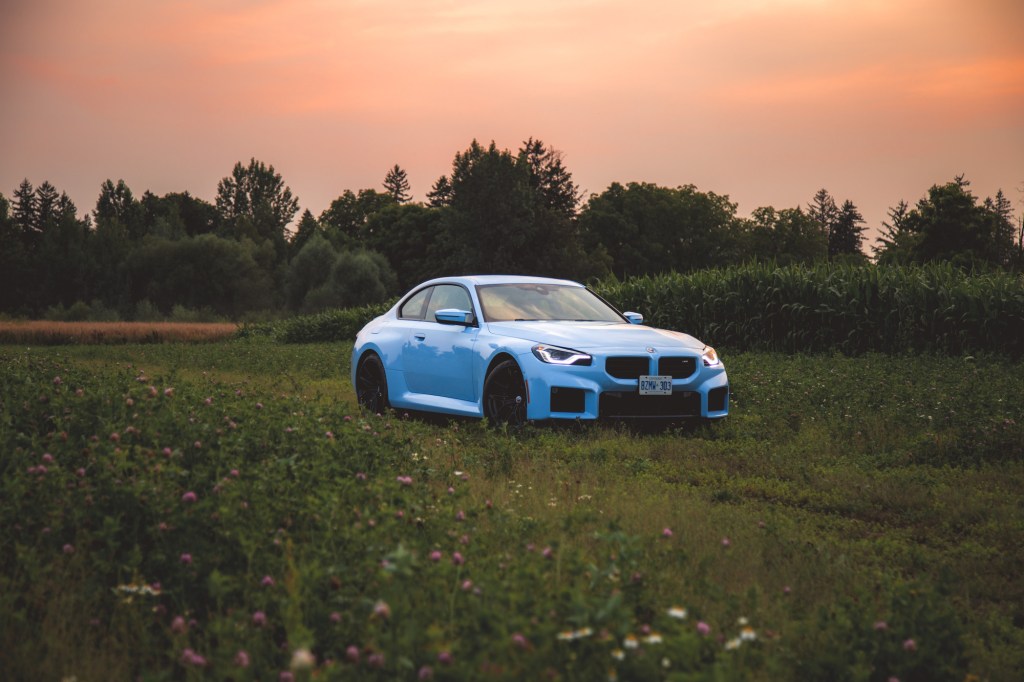





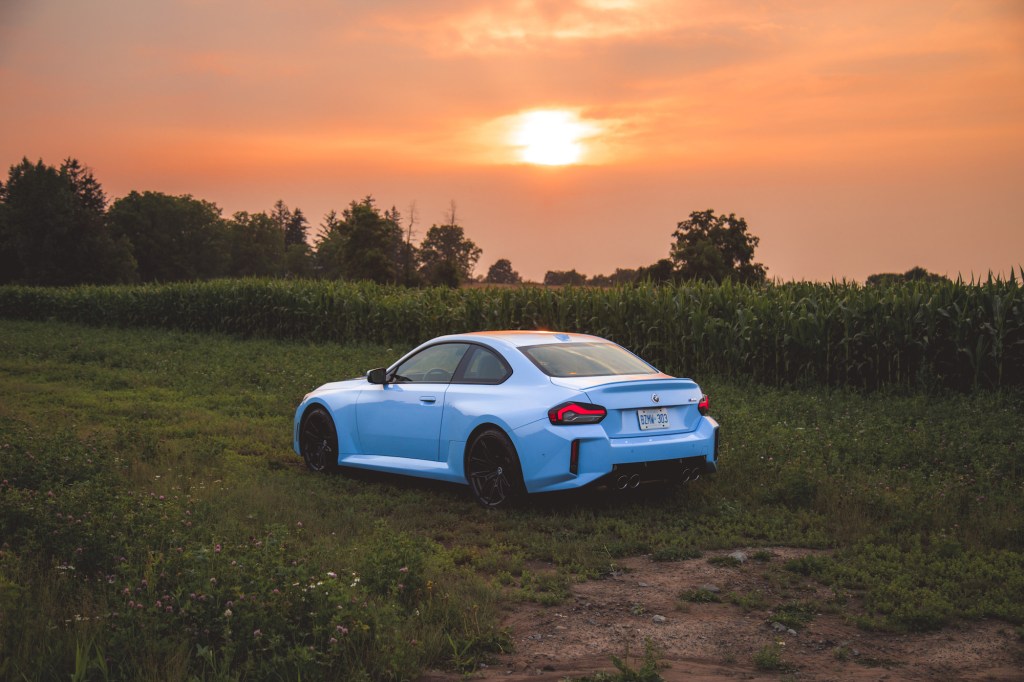
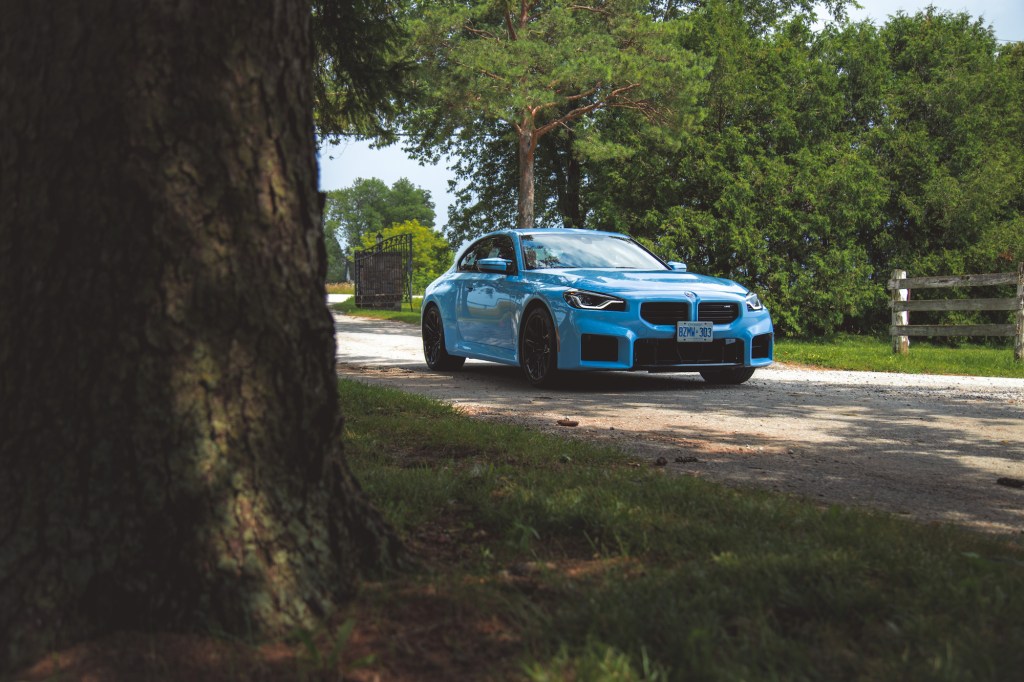




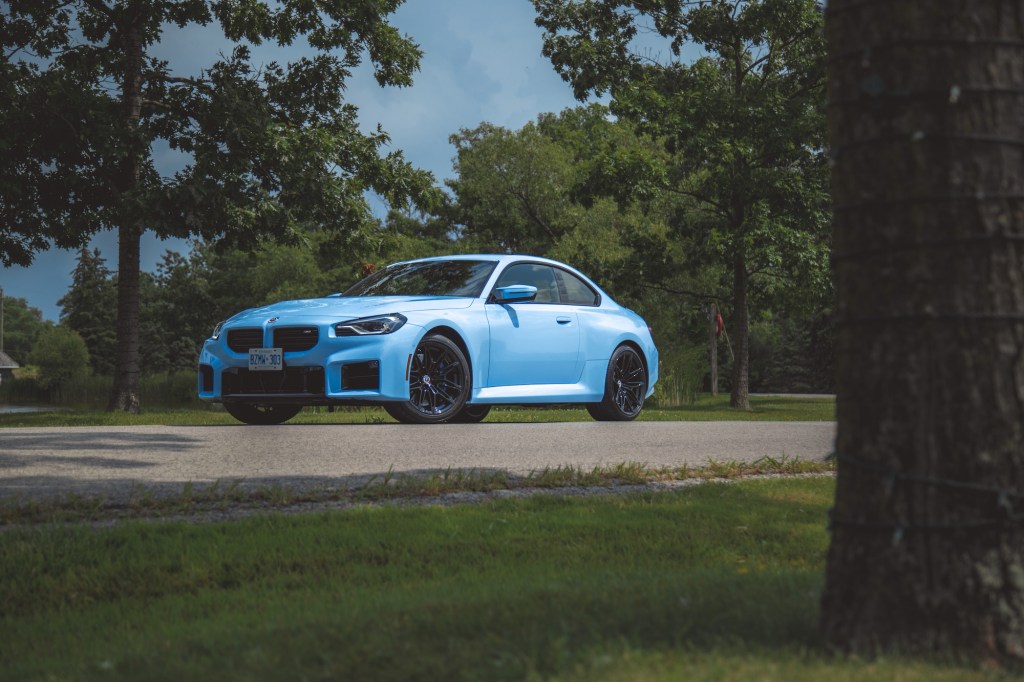

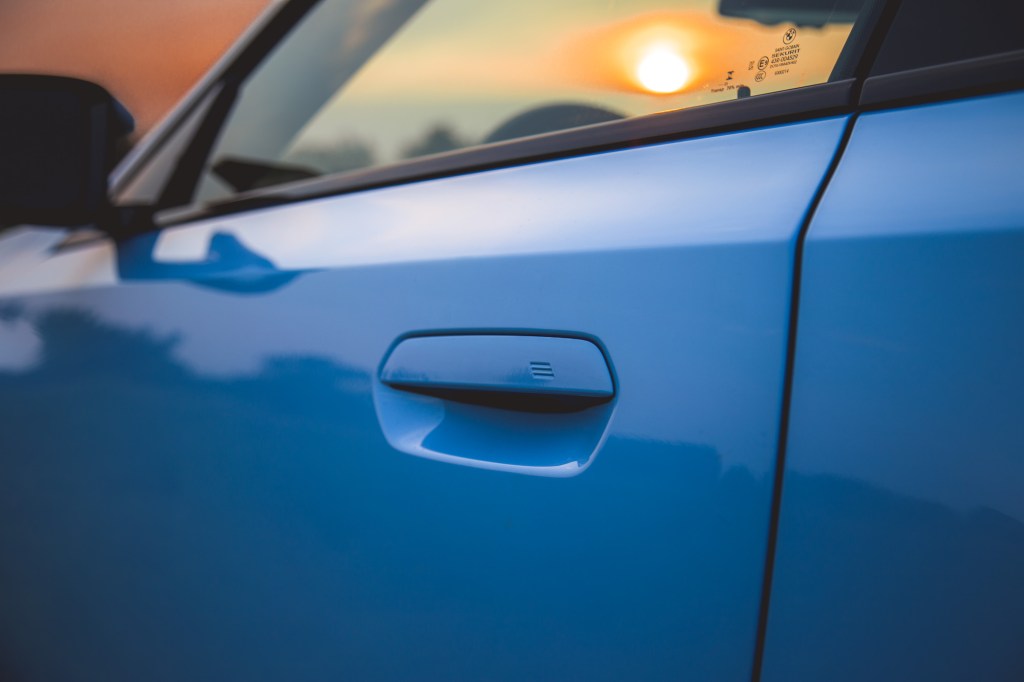


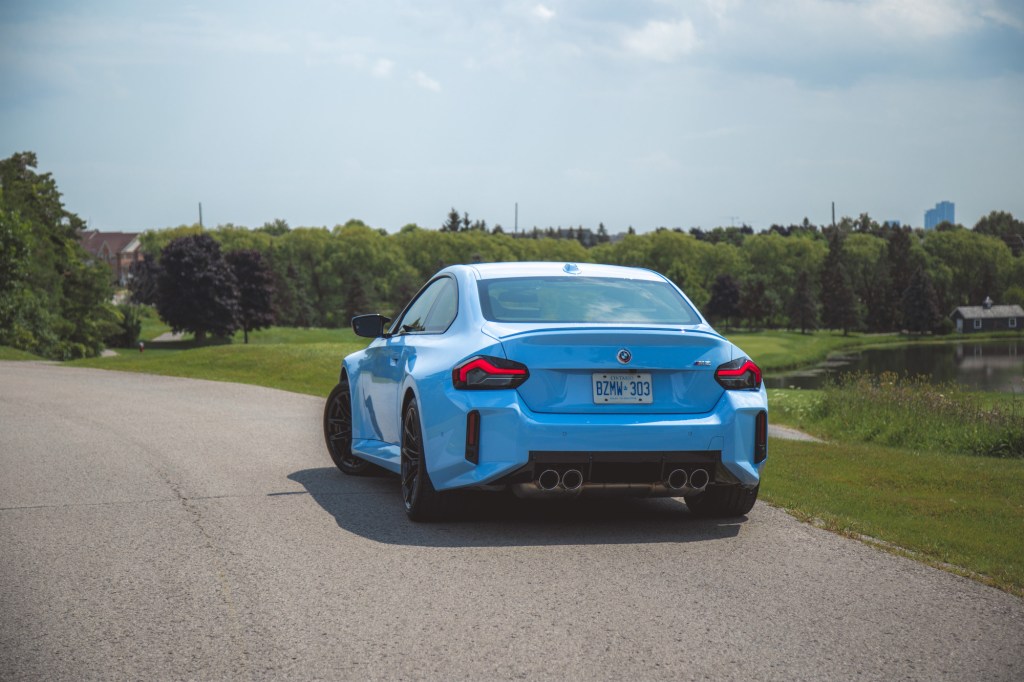










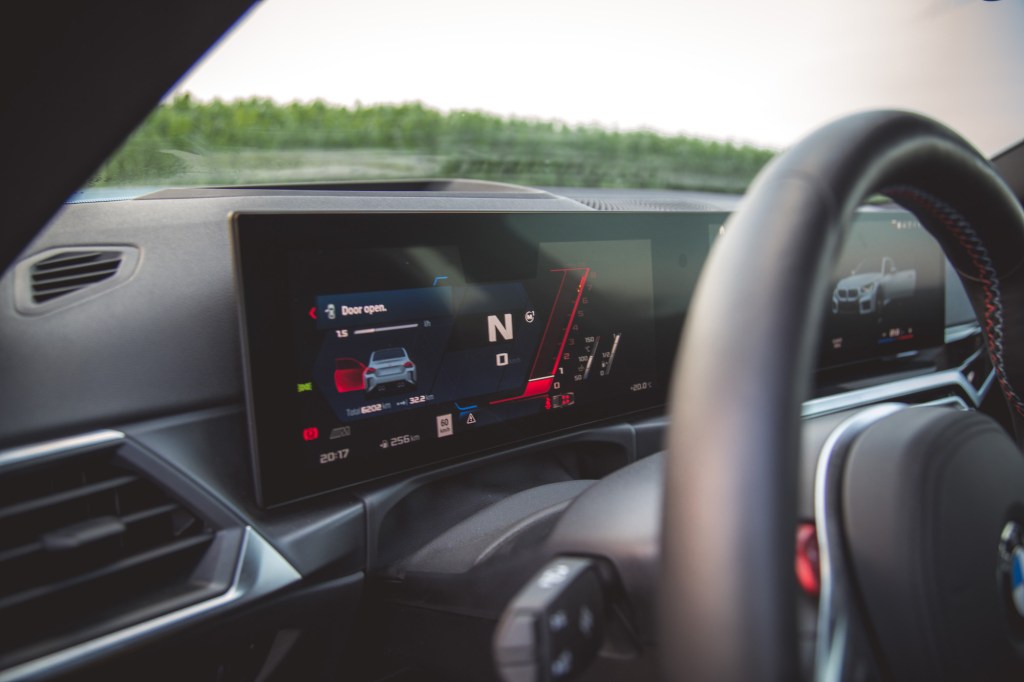











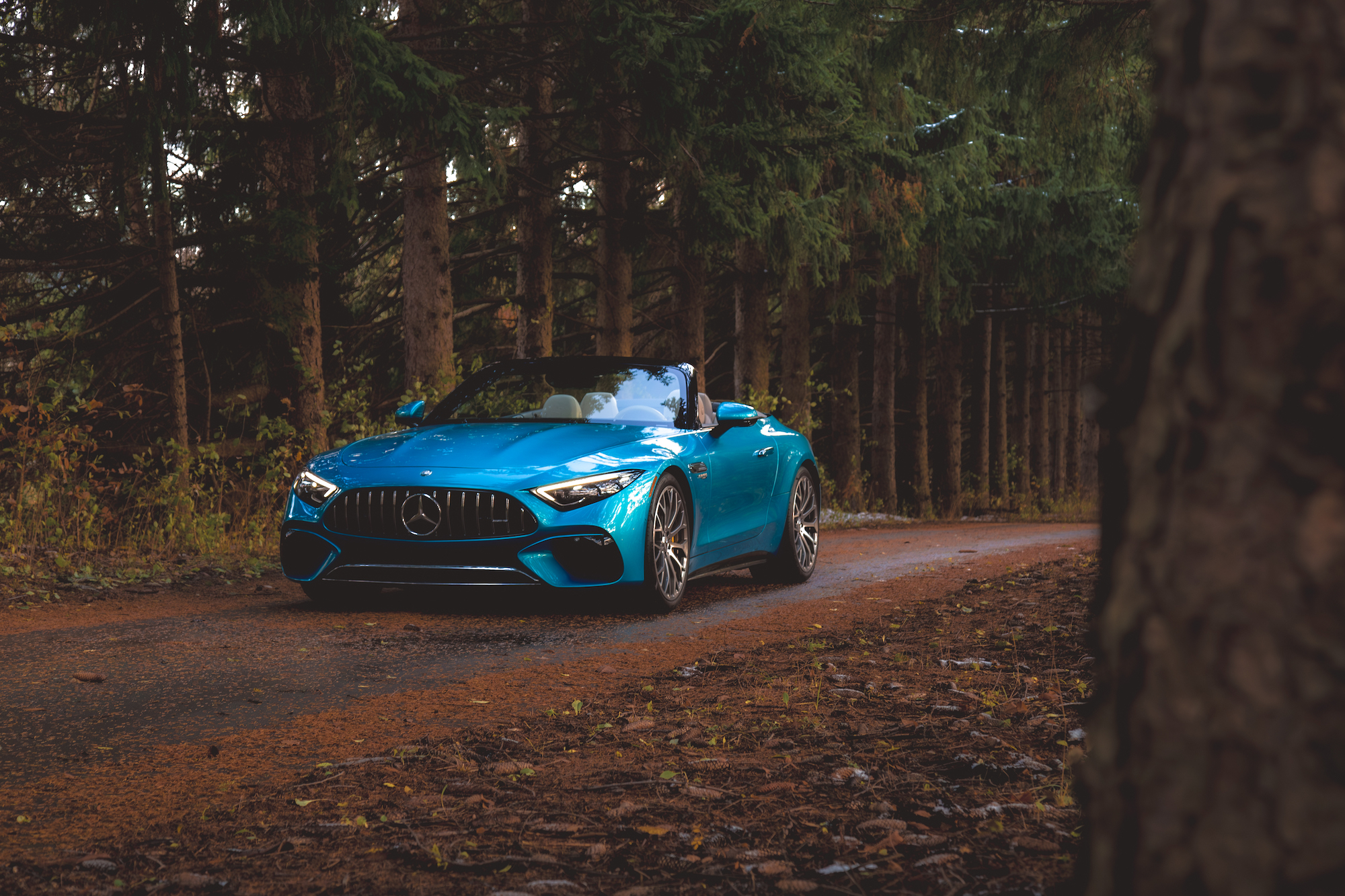

Leave a Reply